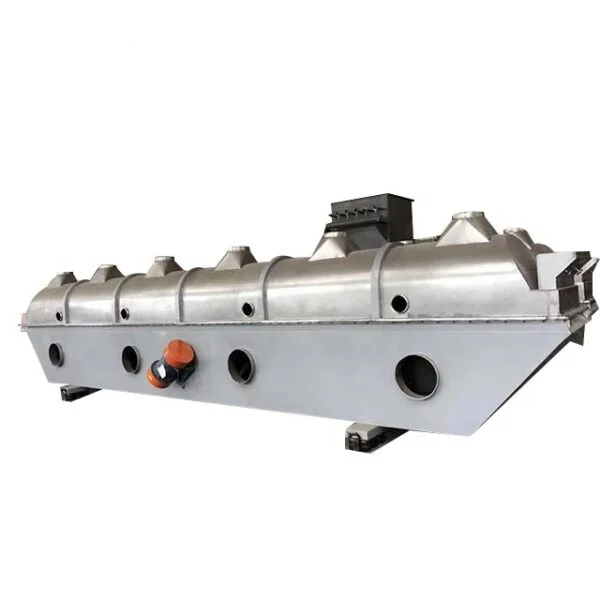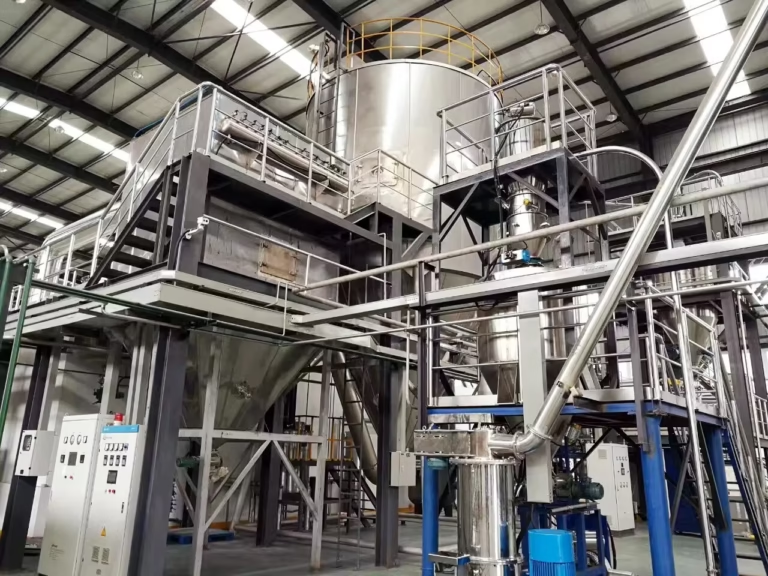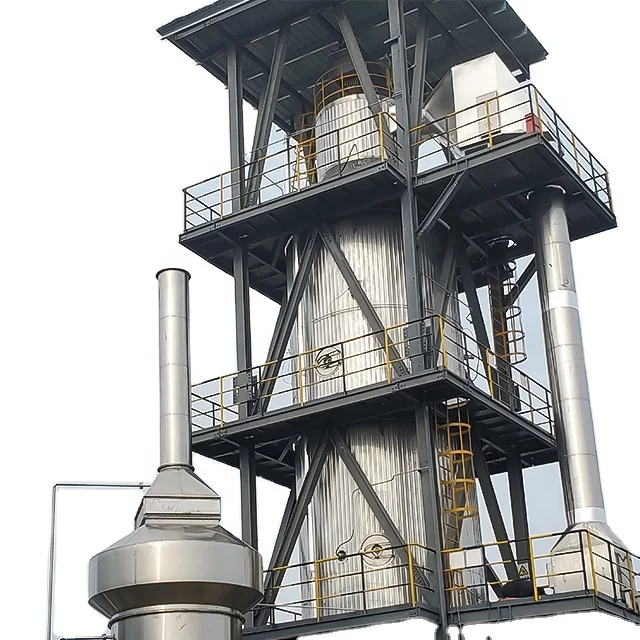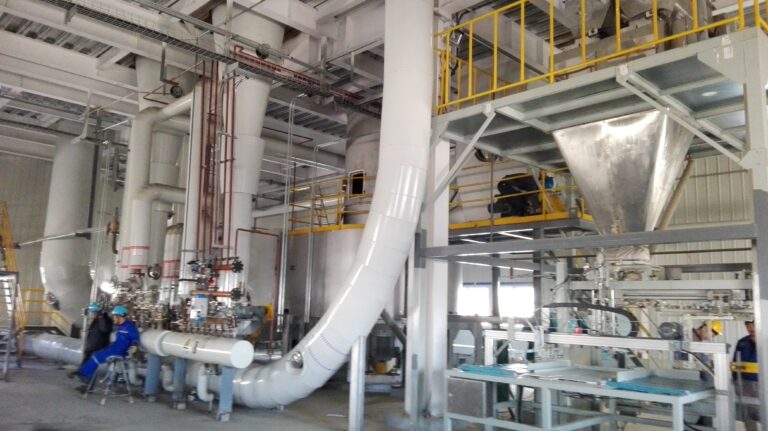喷雾干燥器设计使每个行业变得简单
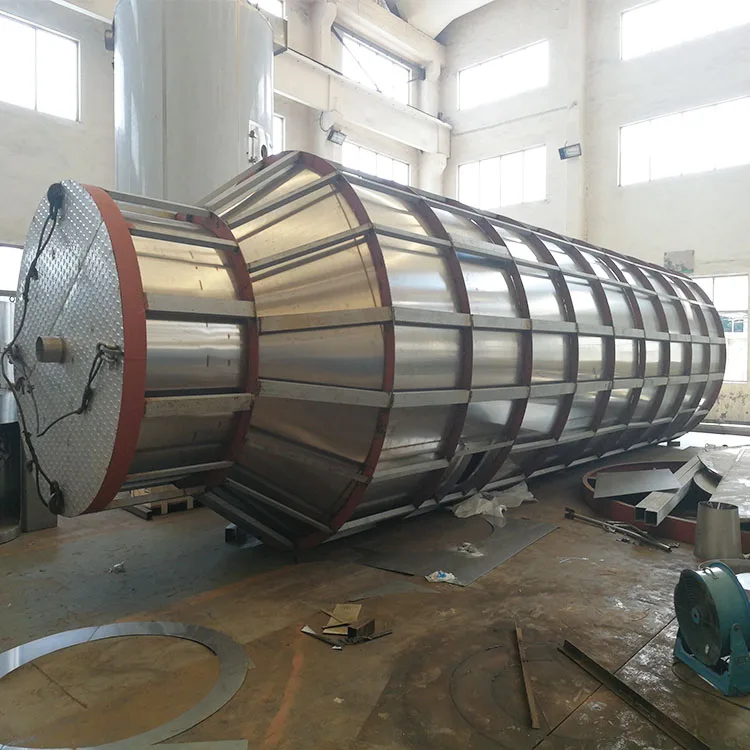
Industrial spray drying relies on different types of spray dryers, including single-stage, two-stage, and co-current designs, each using unique atomization methods. Understanding spray dryer design improves both product quality and process efficiency.
研究表明 optimizing spray drying parameters—like inlet air temperature or feed flow rate—reduces process variability and boosts yield.
The table below highlights how changes in spray dryer system design influence performance:
Design Aspect | Efficiency Outcome |
|---|---|
Better droplet dispersion, improved drying | |
Swirling flow | Shorter dryer height, enhanced performance |
Less wall deposition, higher drying efficiency |
With these insights, industries can select the right types of industrial dryers for their needs.
关键要点
Different 喷雾干燥机设计 like single-stage, two-stage, and co-current suit various industries and product needs.
Choosing the right atomization method improves drying efficiency and powder quality based on feed type and sensitivity.
Spray drying supports many industries by preserving product quality, increasing yield, and reducing energy use.
Matching dryer design and process parameters to product sensitivity and scale ensures consistent, 高品质粉末.
Advanced technologies and modeling help optimize spray drying for better performance and safer operations.
喷雾干燥技术
什么是喷雾干燥
Spray drying stands as a leading method for transforming liquid feed into dry powder. This process uses specialized industrial dryers that atomize the liquid into fine droplets. Heated air rapidly removes moisture, leaving behind uniform powder particles. Operators control parameters such as inlet temperature, atomization pressure, and airflow to achieve precise moisture removal. Spray drying offers a fast, continuous drying process, making it ideal for large-scale industrial drying.
Recent advancements have propelled spray drying technology forward.
这 market for spray drying machines reached USD 5.8 十亿 2024 预计将增长至美元 9.2 十亿 2033.
Manufacturers now integrate advanced control systems and automation for better process control.
Nanotechnology enables spray drying of nanoparticles and liposomes, especially in pharmaceuticals.
Corrosion-resistant materials improve machine durability, especially in food processing.
Customization allows for specialized powder production in various applications.
Artificial intelligence and machine learning support predictive maintenance and real-time monitoring.
Energy-efficient machines and renewable energy sources address sustainability concerns.
工业应用
Spray drying serves a wide range of industrial sectors. In the food industry, it preserves flavor, nutrition, and shelf life in products like milk powder, 咖啡, 和调味品. Pharmaceutical companies rely on spray dryers for precise atomization and moisture removal, ensuring the integrity of antibiotics, proteins, 和疫苗. Chemical manufacturers use spray drying to create powders with controlled particle size and high surface area, essential for catalysts and detergents. Ceramics producers benefit from uniform powder particles for casting and coating.
工业领域 | Key Performance Metrics Improved with Spray Drying | Specific Improvements |
|---|---|---|
食物 & Dairy | Shelf life, nutritional preservation, flavor retention, drying efficiency, cost-effectiveness | Longer shelf life, preservation of organoleptic properties, extensive use in milk powder, 婴幼儿配方奶粉, 咖啡, powdered soups |
药品 | Product quality consistency, precise atomization, bioactive integrity, throughput capacity | Maintains integrity of antibiotics, proteins, 疫苗; consistent particle size and stability |
化学品 | Particle morphology, surface area, 孔隙率, energy consumption optimization | Catalyst and detergent production benefits from controlled particle characteristics and energy efficiency |
陶瓷 | Uniform particle size, drying efficiency, throughput | Improved casting and coating processes due to uniform particles |
Spray drying delivers high yields in industrial settings. 例如, pharmaceutical spray drying processes have achieved yields above 90% across multiple batches by optimizing gas flow and temperature. This efficiency highlights the value of 喷雾干燥机 for consistent powder production and reliable moisture removal in industrial drying.
Different Types of Spray Dryers
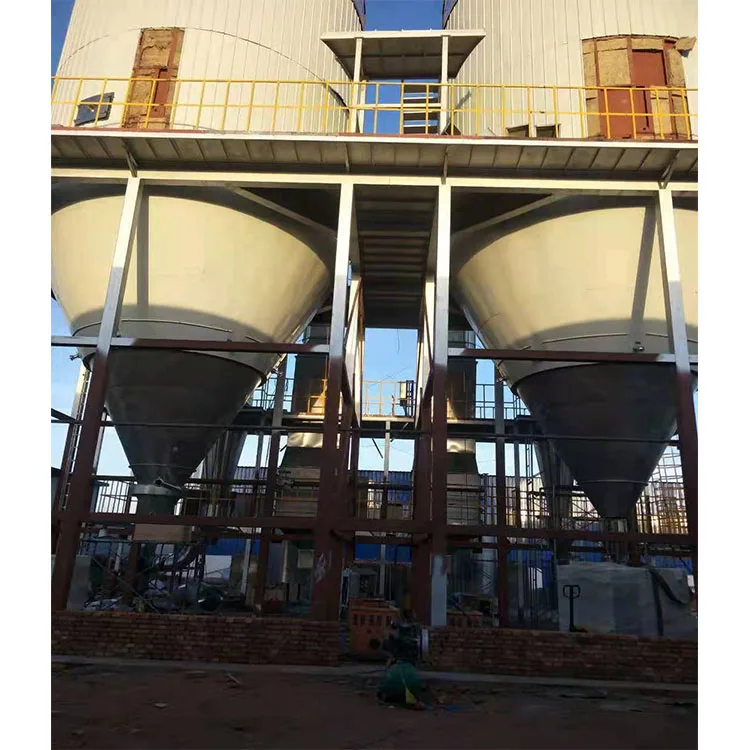
Spray drying technology offers several dryer designs to meet the needs of various industrial sectors. Each type of dryer uses a unique approach to transform liquid feed into powder. The choice of dryer affects product quality, 能源使用, and process efficiency. Understanding the different types of spray dryers helps industries select the best system for their batch or continuous production needs.
Single-Stage Spray Dryers
单级喷雾干燥机 use a one-pass drying process. The liquid feed enters the chamber and atomizes into fine droplets. Hot air flows through the chamber, removing moisture and forming powder. Most single-stage dryers require tall towers to provide enough time for drying. Rotary atomizers can shorten the vessel by creating a spiral flow, which improves drying in a smaller space.
Operators often use single-stage dryers for large-scale, continuous production of food, 化学品, and ceramics. These dryers handle high volumes and produce dry powder quickly. 然而, single-stage spray dryer design may lead to more dust and less control over particle size. Nozzle position in the chamber affects fouling and operability. Placing the nozzle lower in the chamber reduces fouling and improves performance.
笔记: Single-stage dryers work best for products that do not need strict control over particle size or agglomeration.
两级喷雾干燥机
Two-stage spray dryers add a fluidized bed to the drying process. The first stage uses a spray chamber to remove most moisture. The second stage uses a fluid bed, either inside or outside the chamber, to finish drying and cool the powder. This design improves product quality by reducing dust and allowing agglomeration.
Two-stage dryers suit industries that need better control over powder properties. Food and dairy producers often use these dryers for milk powder and instant drinks. The two-stage process supports both batch and continuous operations. It also lowers the outlet temperature, which protects heat-sensitive products.
Co-Current Spray Dryers
Co-current spray dryers introduce both the hot air and the atomized feed at the top of the chamber. Air and droplets move in the same direction. This design creates gentle drying conditions, as the hottest air meets the wettest droplets. The temperature drops as the powder dries, which protects sensitive ingredients.
Co-current dryers work well for products that need careful handling, such as pharmaceuticals and food flavors. These dryers support continuous production and help maintain product quality. The co-current flow reduces the risk of overheating and keeps the powder uniform.
Counter-Current Spray Dryers
Counter-current spray dryers send hot air from the bottom of the chamber, while the atomized feed enters from the top. Air and droplets move in opposite directions. This design exposes the driest powder to the hottest air, which can increase drying efficiency.
Industries use counter-current dryers for products that can handle higher temperatures. Chemical and ceramic producers often choose this design for continuous drying of robust powders. 然而, this method may not suit heat-sensitive materials, as the final powder faces the hottest air.
闭式循环喷雾干燥机
Closed cycle spray dryers operate in a sealed system. Instead of air, these dryers use an inert gas, 例如氮气, to dry the feed. The system recycles the gas and recovers solvents, making it safe for flammable or oxygen-sensitive products.
Closed cycle dryers serve industries that process solvents or need to prevent oxidation. Pharmaceutical and chemical manufacturers use these dryers for both batch and continuous production. The closed loop design improves safety and allows solvent recovery, which reduces environmental impact.
提示: Closed cycle spray dryer design is ideal for handling hazardous or valuable solvents in industrial settings.
Combination Spray Dryers
Combination spray dryers blend features from different designs. 例如, a dryer may use both co-current and counter-current air flows or combine spray drying with other drying methods. These systems offer flexibility for complex products.
Industries use combination dryers when standard designs do not meet their needs. These dryers can handle special powders, such as those with unique particle size or moisture requirements. Combination dryers support both batch and continuous processes, making them suitable for research and custom production.
Dryer Type | 主要特点 | Typical Uses |
|---|---|---|
Single-Stage | One-pass drying, tall tower | 食物, 化学品, 陶瓷 |
Two-Stage | Fluid bed addition, dust reduction | Dairy, instant drinks, agglomerates |
Co-Current | Gentle drying, same direction flow | 药品, 口味 |
Counter-Current | 高效率, opposite flow | 化学品, 陶瓷 |
闭式循环 | Inert gas, 溶剂回收 | 药品, solvents |
Combination | Hybrid design, flexible operation | Custom powders, 右&D |
Spray dryer design choices affect energy use and product quality. Recycling exhaust air can improve energy efficiency, especially for high solid content feeds. Dehumidifying recycled air raises its temperature and lowers the energy needed for heating. These steps increase the driving force for moisture evaporation and make spray drying more efficient.
Operators must consider the type of feed, desired powder properties, and safety needs when choosing among the different types of spray dryers. Each design supports both batch and continuous production, allowing industries to match their process to the product.
Atomization Methods in Spray Dryer Design
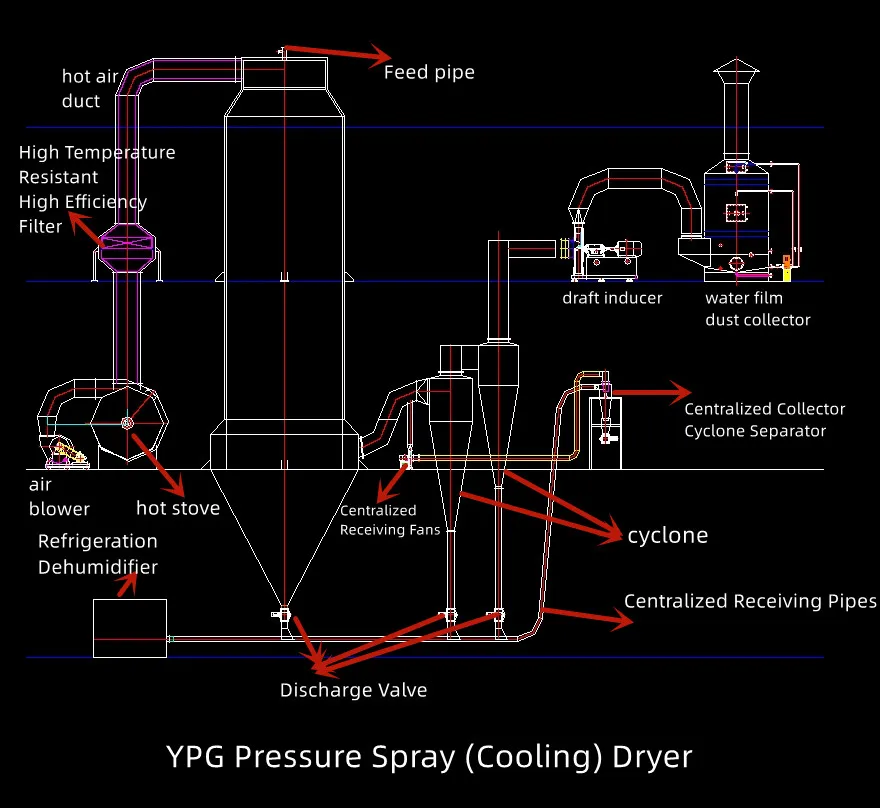
Spray dryer performance depends heavily on the choice of atomization method. Atomization breaks liquid feed into fine droplets, which increases surface area for rapid moisture removal. The right atomization technique ensures efficient drying, 一致的粉末质量, and optimal energy use. Three main atomization methods dominate industrial 喷雾干燥机设计: rotary atomizer, pressure nozzle atomizer, and two-fluid nozzle atomizer.
旋转雾化器
A rotary atomizer uses a high-speed spinning disc or wheel to fling liquid outward, forming a spray of fine droplets. This atomization method handles viscous or multicomponent liquids well. Operators often choose rotary atomizers for large-scale production because they create uniform droplet sizes, which leads to consistent powder particles and effective moisture removal.
Phase Doppler measurements show rotary atomizers produce predictable droplet size and velocity.
Rotary atomizers influence spray patterns, which affect airflow and temperature inside the drying chamber.
This method reduces wall deposits and supports high evaporation rates.
Rotary atomizers suit industries like chemicals and dairy, where feed viscosity varies and uniformity is critical.
Pressure Nozzle Atomizer
A pressure nozzle atomizer forces liquid through a small orifice at high pressure, creating a spray. This atomization method produces a range of droplet sizes, which can be adjusted by changing pressure or nozzle design. Pressure nozzle atomizers work best with low to medium viscosity feeds.
CFD simulations reveal that pressure nozzle atomizers create distinct flow patterns and temperature profiles.
Operators can fine-tune droplet size for specific powder characteristics and moisture removal needs.
This method often results in higher heat transfer intensity and efficient drying.
Pressure nozzle atomizers are common in food and pharmaceutical industries, where precise control over powder properties is essential.
Two-Fluid Nozzle Atomizer
A two-fluid nozzle atomizer mixes liquid feed with compressed air or gas, 将其分解成水滴. This atomization method excels with heat-sensitive or dilute feeds. The added air helps create very fine droplets, which speeds up moisture removal and produces powders with small particle sizes.
Two-fluid nozzle atomizers offer flexibility for lab-scale or specialty products.
They allow operators to adjust atomization energy by changing air-to-liquid ratios.
This method supports gentle drying, protecting sensitive ingredients.
Industries use two-fluid nozzle atomizers for pharmaceuticals, 口味, 和特种化学品.
Choosing the right atomization method depends on feed viscosity, desired powder size, and industry requirements. Each atomization technique shapes spray patterns, drying efficiency, and final product quality.
Types of Industrial Dryers by Application
食品工业
The food industry relies on spray drying for a wide range of applications. Dairy producers use spray dryers to create milk powder, 婴幼儿配方奶粉, 和咖啡粉. These products require gentle drying to preserve nutrients and flavor. Nozzle atomizer dryers and centrifugal dryers handle heat-sensitive foods well. Operators choose these types of industrial dryers for their ability to produce free-flowing powder in bulk. Food drying also benefits from energy-efficient designs, which help reduce operational costs. Asia Pacific leads in new spray dryer installations, driven by demand for processed foods and beverages.
Table: Comparison of Spray Drying in Food and Pharmaceutical Industries
因素 | Food Processing Industry | Pharmaceutical Manufacturing Industry |
|---|---|---|
Key Applications | 奶粉, 蛋粉, 咖啡粉 | 蜜蜂, 疫苗, biologics |
Market Share (烘干机) | Centrifugal spray dryers: 45.2% (2024) | |
Product Benefits | Bulk production, texture preservation | Precision, 稳定, bioavailability |
医药行业
Pharmaceutical manufacturing depends on spray drying to produce powders with precise particle size and stability. Centrifugal spray dryers dominate this sector, supporting the production of active pharmaceutical ingredients (蜜蜂), 疫苗, and biologics. These dryers ensure uniform powder and protect sensitive compounds. The industry values advanced drying technology for its ability to maintain bioavailability and product integrity. Asia Pacific shows strong growth in pharmaceutical spray drying, reflecting the global rise in biologics and advanced drug formulations.
化学工业
Chemical manufacturers use spray drying to create powders for detergents, 催化剂, 和颜料. These applications require industrial dryers that can handle high temperatures and varying feed properties. Counter-current and closed cycle spray dryers often serve this sector. Operators select these types of industrial dryers for their efficiency and ability to recover solvents. The resulting powder features controlled particle size and high surface area, which are critical for chemical reactions and product performance.
Other Industrial Uses
Spray drying supports many other industrial drying needs. Ceramics producers rely on spray dryers to create uniform powder for casting and coating. The process ensures consistent particle size, which improves product quality. Combination dryers offer flexibility for research and custom powder production. Beverage manufacturers use spray drying to produce instant drink powders, ensuring quick dissolution and long shelf life. Each application benefits from matching the right dryer and atomization method to the product’s requirements.
提示: Selecting the correct spray dryer design and atomization method improves efficiency and product quality across all industrial applications.
Choosing the Right Spray Dryer Design
Key Selection Factors
选择正确的 喷雾干燥机设计 requires careful evaluation of several factors. Product sensitivity stands as a primary concern. Some powders degrade at high temperatures, so operators must set maximum inlet and outlet temperatures to protect product quality. The scale of production also matters. Batch operations suit small runs or research, while continuous systems handle large volumes and steady output. Feed characteristics, such as viscosity and solids content, influence atomization and the drying process. Operators must also consider the desired level of moisture removal and the need for precise control over powder properties.
提示: Always match the drying process to the product’s heat sensitivity and production scale for best results.
A model-based approach helps define the operating space for both batch and continuous spray drying. This method uses mass and energy balances to predict outlet conditions, reducing the need for costly experiments. Operators can plot multivariate graphs to visualize how changes in feed rate or temperature affect powder quality.
Matching Dryer to Product Needs
Aligning dryer design with industry requirements ensures efficient moisture removal and consistent product quality. The table below summarizes key benchmarks that guide this process:
Benchmark / 范围 | 描述 / Role |
|---|---|
Minimum Specific Drying Ratio | Ensures enough throughput and process efficiency for batch and continuous runs. |
Maximum Outlet Temperature (T_out) | Protects product density and prevents thermal degradation. |
Maximum Inlet Temperature (T_in) | Avoids sticking at the dryer inlet, critical for both batch and continuous modes. |
Minimum Outlet Temperature (T_out) | Prevents sticky particles and ensures good yield in the drying process. |
Relative Saturation at Outlet (%RS_out) | Controls drying completeness and collection yield. |
Key Process Parameters (KPPs) | Includes feed rate, gas flow, and temperatures; links to mass and energy balances. |
Model-Based Methodology | Uses physics-based calculations to define safe and efficient operating spaces. |
Batch spray dryers offer flexibility for small-scale or specialty products. Continuous spray dryers deliver high throughput and uniformity, making them ideal for large-scale manufacturing. Operators should select the system that matches their product’s needs, considering factors like powder size, moisture removal, and sensitivity to heat. Proper alignment of dryer type and process parameters leads to reliable, high-quality powders across industries.
Real-World Industrial Examples
食品加工
Spray drying plays a vital role in the food industry. Industrial dryers transform liquid milk into milk powder, which stores well and dissolves quickly. Many food companies use single-stage dryers for large batches of milk, 咖啡, and egg products. These dryers help preserve nutrients and flavor. Operators also use two-stage dryers to make instant drinks and powdered beverages. The process creates a free-flowing powder that mixes easily with water. Food manufacturers rely on spray drying to meet high demand and maintain quality. Modern dryers use advanced controls to keep powder properties consistent.
药品
Pharmaceutical companies depend on spray drying to create powders for medicines. Industrial dryers handle both small lab batches and large commercial runs. Operators use rotary and two-fluid nozzle atomizers to control particle size and flowability. Nitrogen often serves as the drying gas to protect sensitive drugs. Spray drying helps produce powders for inhalers and poorly soluble drugs. 工程师使用 computational fluid dynamics (差价合约) to model the drying process and predict powder quality. They compare simulation results with real dryer data to improve performance. New lab-scale dryers now make powders with properties similar to those from large industrial dryers, reducing risks during scale-up.
Particle size and powder flow depend on atomizer type and solids concentration.
Process modeling tools help optimize spray drying and ensure product quality.
Chemicals and Detergents
Chemical plants use spray drying to make powders for detergents and catalysts. Industrial dryers must handle high temperatures and different feed types. Counter-current and closed cycle dryers are common in this sector. Operators choose these dryers for their ability to recover solvents and control powder size. Spray drying creates powders with high surface area, which improves chemical reactions. Engineers use process simulation to set the best dryer conditions. This approach helps maintain safety and efficiency in industrial settings.
Ceramics and Pigments
Ceramic and pigment producers rely on spray drying to create uniform powders. Industrial dryers ensure each particle has the right size for casting and coating. Combination dryers offer flexibility for custom powders and research projects. Operators adjust dryer settings to match the needs of each product. Spray drying supports both small and large-scale production. The process helps ceramics and pigments achieve high quality and consistent color.
提示: Matching the right industrial dryers and spray drying method to each application leads to better powder quality and process efficiency.
Industrial spray dryers come in many types, such as single-stage, two-stage, co-current, and closed cycle. Atomization methods like rotary, pressure nozzle, and two-fluid nozzle help shape the final powder. Understanding spray dryer design lets industrial operators improve product quality and efficiency. Statistical models, including ANOVA and regression, show that changes in spray drying parameters have a strong effect on industrial process outcomes. These findings help industrial teams choose the best design for their needs. Industrial users should review their product goals, consult experts, and explore new research to stay ahead in industrial spray drying.
ANOVA and regression models reveal significant effects of spray drying parameters on industrial product quality.
Strong F-values and low p-values confirm the importance of these factors in industrial settings.
Reliable model fit and signal-to-noise ratios support confident industrial decision-making.
For those interested in industrial spray drying, industry journals and technical guides offer valuable next steps.
常问问题
What is the main advantage of spray drying over other drying methods?
Spray drying produces uniform powder quickly. It works well for heat-sensitive products. Operators can control particle size and moisture content. This method supports large-scale production in many industries.
How do operators choose the right atomization method?
Operators select atomization methods based on feed viscosity, desired powder size, and product sensitivity. Rotary atomizers suit viscous feeds. Pressure nozzles work for low-viscosity liquids. Two-fluid nozzles handle heat-sensitive or dilute feeds.
Can spray dryers handle hazardous materials?
是的. Closed cycle spray dryers use inert gases like nitrogen. This design prevents oxidation and recovers solvents. Chemical and pharmaceutical industries use these dryers for safe processing of flammable or sensitive materials.
What maintenance does a spray dryer require?
Task | Frequency |
|---|---|
Clean atomizers | Daily |
Inspect seals | Weekly |
Check filters | Weekly |
Calibrate sensors | Monthly |
Regular maintenance keeps the system efficient and extends equipment life.

